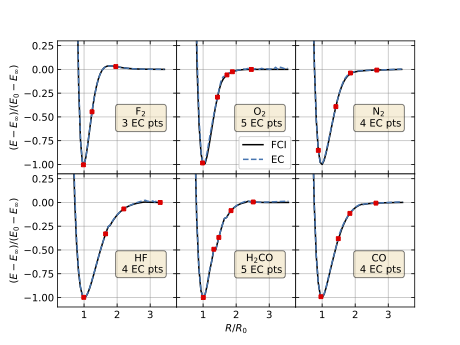Abstract
A typical task for classical and quantum computing in chemistry is finding a potential energy surface (PES) along a reaction coordinate, which involves solving the quantum chemistry problem for many points along the reaction path. Developing algorithms to accomplish this task on quantum computers has been an active area of development, yet finding all the relevant eigenstates along the reaction coordinate remains a difficult problem, and determining PESs is thus a costly proposal. In this paper, we demonstrate the use of a eigenvector continuation — a subspace expansion that uses a few eigenstates as a basis — as a tool for rapidly exploring potential energy surfaces. We apply this to determining the binding PES or torsion PES for several molecules of varying complexity. In all cases, we show that the PES can be captured using relatively few basis states; suggesting that a significant amount of (quantum) computational effort can be saved by making use of already calculated ground states in this manner.
